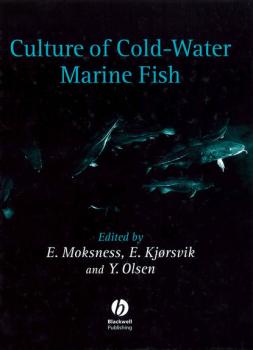ТОП просматриваемых книг сайта:
Техническая литература
Различные книги в жанре Техническая литература, доступные для чтения и скачиванияАннотация
Valuable lessons from Japan’s mobile industry yield 6 Immutable Laws for Mobile Business globally Japan’s mobile customers enjoyed better mobile devices, more content, and the most advanced functionality and services for the last 10+ years. This book helps cut through the many myths and all of the hype surrounding Japan’s mobile dominance to identify the most important laws that will guide the success of mobile businesses around the world. Based on detailed market analysis and unprecedented access to the major players and pioneers of the Japanese mobile industry, this publication helps you understand the Six Immutable Laws of Mobile Business. These will help you and your business successfully navigate the challenges that the world’s Wireless Revolution brings. From Law #1 through Law #6, authors Philip Sugai, Marco Koeder, and Ludovico Ciferri will help guide you to distinguish mobile myth from mobile fact, micro developments from macro trends, and regional characteristics from universal truths. The book highlights Japan’s incredible efforts to offer consumers complex, high-tech devices with enriched services that are nonetheless elegant and easy to use, a quest which the authors have labeled «Simplexity.» Based on their interviews and observations, the authors assert that, "Simplexity will be what truly empowers individual users through their mobile devices. Filled with case studies exploring all aspects of the Japanese mobile industry, this unique publication points carriers and content and service providers towards successful business models and practices for today’s and tomorrow’s mobile Internet. This book is the beginning of the conversation of The Six Immutable Laws of Mobile Business, which is regularly being updated and expanded upon at:www.siximmutablelaws.com
Аннотация
All IP in 3G CDMA Networks covers all the key aspects of UMTS and its implementation from both the engineering designer and the operator and service providers' point of view. It addresses the essential tasks involved in the UMTS network deployment in new regions and within existing 2G/2.5G networks. Key features: Presents solutions for the integration and coexistence of 2G and 3G systems and highlights the seamless interoperability functions between GSM and UMTS. As part of the evolution towards All IP cellular networks, it outlines the IP Multimedia Subsystem – IMS and the packet optimized Radio Access Network, including High Speed Download Packet Access. Provides a complete picture of broadband wireless through UMTS, whilst describing applications enabler platforms and the criteria for 3G services that enhance the user experience. By providing one integrated source in UMTS and its evolution, All IP in 3G CDMA Networks represents an invaluable resource for design engineers, operators and services providers. Likewise, Technical and Marketing Executives and Managers in wireless communications or related areas, and Business or Sales channels representatives, will benefit from this concise volume in 3G networks and services enablers. Academic programmes in Telecommunications and Information Technology segments at senior or postgraduate level, will also find valuable contributions in this book.
Аннотация
IMS Multimedia Telephony service has been standardized in 3GPP as the replacement of the circuit switched telephony service in cellular networks. The multimedia telephony service consists of several service components such as voice, video and text. ‘IMS Multimedia Telephony over Cellular Systems’ provides a comprehensive overview of the service that will enable enriched telephony for mobile users. Enriched telephony fulfils the user’s desire to communicate in new ways, for example by sharing pictures and video clips. In addition to an overview of the Multimedia Telephony service, the book focuses on the modern media processing methods, which allows the quality of the packet switched voice and video telephony not only to match but also possibly exceed the quality of circuit switched telephony. Such key components as adaptive jitter buffering and adaptation of conversational media are explained in detail. Key features: Detailed description of how Multimedia Telephony sessions are set-up and controlled Analysis showing the capacity and quality of VoIP and Multimedia Telephony in cellular networks Coverage of other IMS services such as PoC specified by 3GPP and OMA Description of suitable QoS and radio bearers for Multimedia Telephony Explanation of the modern radio interface, especially High Speed Packet Access, which is based on concepts such as link adaptation and fast hybrid ARQ The possibilities for the current and future standards covered in this book make it an indispensable resource for engineers, designers and researchers in VoIP, telecommunication companies and universities teaching and conducting research in telecommunications. It will also be of interest to managers needing an in-depth knowledge of the engineering and key issues of this complex technology, and students aspiring to develop a career in this area.
Аннотация
With the continuing decline of commercial stocks of wild-caught fish, the interest in the culture of cold-water marine fish is rapidly growing, with much ongoing research into the development of this area. This important and timely book reviews the current and potential future situation concerning the major exploited marine fish species, such as cod, haddock, hake, wolf-fish, halibut, turbot and sole. The editors of Culture of Cold-Water Marine Fish have drawn together and carefully edited chapters from a wide range of international scientists. The contents list includes detailed reviews of abiotic factors, microbial interactions, prophylaxis and disease, live food and first feeding technologies, brood stock and egg production, functional development, weaning and nursery, on-growing to market size, status and perspectives for the species covered, stock enhancement and sea ranching, and an analysis of the finances, economics and markets for the fish species used in marine aquaculture. Culture of Cold-Water Marine Fish is an essential purchase for personnel involved in marine aquaculture, whether managing fish farms, supplying equipment and feed to the industry, or researching, studying or teaching the subject. Marine biologists, fisheries scientists, fish biologists, ecologists and environmental scientists will all find much of use and interest in this timely book. Libraries in all universities and research establishments where these subjects are studied and taught should have copies.
Аннотация
Recent decades have witnessed strong declines in fish stocks around the globe, amid growing concerns about the impact of fisheries on marine and freshwater biodiversity. Fisheries biologists and managers are therefore increasingly asking about aspects of ecology, behaviour, evolution and biodiversity that were traditionally studied by people working in very separate fields. This has highlighted the need to work more closely together, in order to help ensure future success both in management and conservation. The Handbook of Fish Biology and Fisheries has been written by an international team of scientists and practitioners, to provide an overview of the biology of freshwater and marine fish species together with the science that supports fisheries management and conservation. This volume, subtitled Fish Biology, reviews a broad variety of topics from evolutionary relationships and global biogeography to physiology, recruitment, life histories, genetics, foraging behaviour, reproductive behaviour and community ecology. The second volume, subtitled Fisheries, uses much of this information in a wide-ranging review of fisheries biology, including methods of capture, marketing, economics, stock assessment, forecasting, ecosystem impacts and conservation. Together, these books present the state of the art in our understanding of fish biology and fisheries and will serve as valuable references for undergraduates and graduates looking for a comprehensive source on a wide variety of topics in fisheries science. They will also be useful to researchers who need up-to-date reviews of topics that impinge on their fields, and decision makers who need to appreciate the scientific background for management and conservation of aquatic ecosystems. To order volume I, go to the box in the top right hand corner. Alternatively to order volume II, go to: http://www.blackwellpublishing.com/book.asp?ref=063206482X or to order the 2 volume set, go to: http://www.blackwellpublishing.com/book.asp?ref=0632064838. Provides a unique overview of the study of fish biology and ecology, and the assessment and management of fish populations and ecosystems. The first volume concentrates on aspects of fish biology and ecology, both at the individual and population levels, whilst the second volume addresses the assessment and management of fish populations and ecosystems. Written by an international team of expert scientists and practitioners. An invaluable reference tool for both students, researchers and practitioners working in the fields of fish biology and fisheries.
Аннотация
Published in Cooperation with THE UNITED STATES AQUACULTURE SOCIETY The rapid growth of aquaculture worldwide and domestically has caused concerns over social and environmental impacts. Environmental advocacy groups and government regulatory agencies have called for better management to address potentially negative impacts and assure sustainable aquaculture development. Best Management Practices (BMPs) combine sound science, common sense, economics, and site-specific management to mitigate or prevent adverse environmental impacts. Environmental Best Management Practices for Aquaculture will provide technical guidance to improve the environmental performance of aquaculture. This book will be the only comprehensive guide to BMPs for mitigation of environmental impacts of aquaculture in the United States. The book addresses development and implementation of BMPs, BMPs for specific aquaculture production systems, and the economics of implementing best management practices. Written by internationally recognized experts in environmental management and aquaculture from academia, government, and non-governmental organizations, this book will be a valuable reference for innovative producers, policy makers, regulators, research scientists, and students.
Аннотация
In the sixteen years since the last edition of Von Brant’s classic work was published, fishing and fisheries have undergone vast changes. Not only has there been great progress in the development of new tools, materials and techniques, but the industry has seen an increasing need to address controversial issues such as declining fish stocks, enormous quantities of bycatch and discard and the impact of towed fishing gear on the environment. Fully revised and updated to reflect such changes, the fourth edition of this widely read and popular book offers: A unique, comprehensive survey of the evolution of fishing methods throughout the world Approximately 750 illustrations showing the extensive range of methods, techniques and equipment used in fishing across the globe Fishing gear classified according to the FAO system Additional chapters: Fishing Effects on Fish Stocks and Environment and Fishery and Gear Research All researchers, fisheries scientists, fisheries students, administrators and libraries in universities and research establishments where fish and fisheries are studied and taught will find this book a valuable addition to their shelves. Commercial and sports fishermen will also find Fish Catching Methods of the World a fascinating and vital reference.
Аннотация
The recent development of molecular biology and genetic techniques, in particular those that are increasingly being used in practical situations in fish biology, fisheries and aquaculture, has led to a gap in the understanding by many of the science behind these techniques and their correct implementation for maximum results. The authors of this important book, Andy Beaumont and Kate Hoare, have written a text of great clarity, which carefully explains the science and application of molecular and genetic techniques to fisheries and aquaculture situations and what these new technologies have to offer. Contents include a full explanation of genetic variation and its measurement, genetic structure in natural populations, genetics and artificial selection in the hatchery, ploidy manipulation and the use of genetic engineering in aquaculture. Biotechnology and Genetics in Fisheries and Aquaculture is of great use to biological sciences students, particularly those studying marine, freshwater and aquatic biology, fish biology, fisheries, aquaculture, population biology and genetics. The book is also extremely useful as a reference to personnel such as fish farmers and fisheries scientists and all those working in fisheries and aquaculture management and research. Libraries in all universities and research establishments where biological sciences, fisheries and aquaculture are studied and taught should have copies of this book on their shelves.
Аннотация
In this edited work, international experts in fisheries management and ecology review and appraise the status of river fisheries, assessment methodology, constraints on development, issues and options regarding management and associated problems in both temperate and tropical countries. Recommendations are made to improve management and an attempt is made to provide guidelines for formulating policy, for planning methodology and for evaluating future activities. Assessment of fish community structure and dynamics. Factors constraining stock recruitment. Fish habitat requirements. Instream flow needs. Impact of water resource schemes. Rehabilitation of river fisheries. Enhancement of fish stocks. Exploitation of stocks. Management of migratory fish stocks. Conservation of endangered species. Integrated river management. Bioeconomic issues. Legislation. Multinational management of rivers. Case studies.
Аннотация
Recent decades have witnessed strong declines in fish stocks around the globe, amid growing concerns about the impact of fisheries on marine and freshwater biodiversity. Fisheries biologists and managers are therefore increasingly asking about aspects of ecology, behaviour, evolution and biodiversity that were traditionally studied by people working in very separate fields. This has highlighted the need to work more closely together, in order to help ensure future success both in management and conservation. The Handbook of Fish Biology and Fisheries has been written by an international team of scientists and practitioners, to provide an overview of the biology of freshwater and marine fish species together with the science that supports fisheries management and conservation. This volume, subtitled Fisheries, focuses on a wide range of topics, including the history of fisheries science, methods of capture, marketing, economics, major models used in stock assessments and forecasting, ecosystem impacts, marine protected areas and conservation. It builds on material in Volume 1, Fish Biology, which ranges from phylogenetics and biogeography to physiology, recruitment, life histories, genetics, foraging, reproductive behaviour and community ecology. Together, these books present the state of the art in our understanding of fish biology and fisheries and will serve as valuable references for undergraduates and graduates looking for a comprehensive source on a wide variety of topics in fisheries science. They will also be useful to researchers who need up-to-date reviews of topics that impinge on their fields, and decision makers who need to appreciate the scientific background for management and conservation of aquatic ecosystems. To order volume II, go to the box in the top right hand corner. Alternatively to order volume I, go to: http://www.blackwellpublishing.com/book.asp?ref=0632054123 or to order the 2 volume set, go to: http://www.blackwellpublishing.com/book.asp?ref=0632064838. Provides a unique overview of the study of fish biology and ecology, and the assessment and management of fish populations and ecosystems. The first volume concentrates on aspects of fish biology and ecology, both at the individual and population levels, whilst the second volume addresses the assessment and management of fish populations and ecosystems. Written by an international team of expert scientists and practitioners. An invaluable reference tool for both students, researchers and practitioners working in the fields of fish biology and fisheries.










